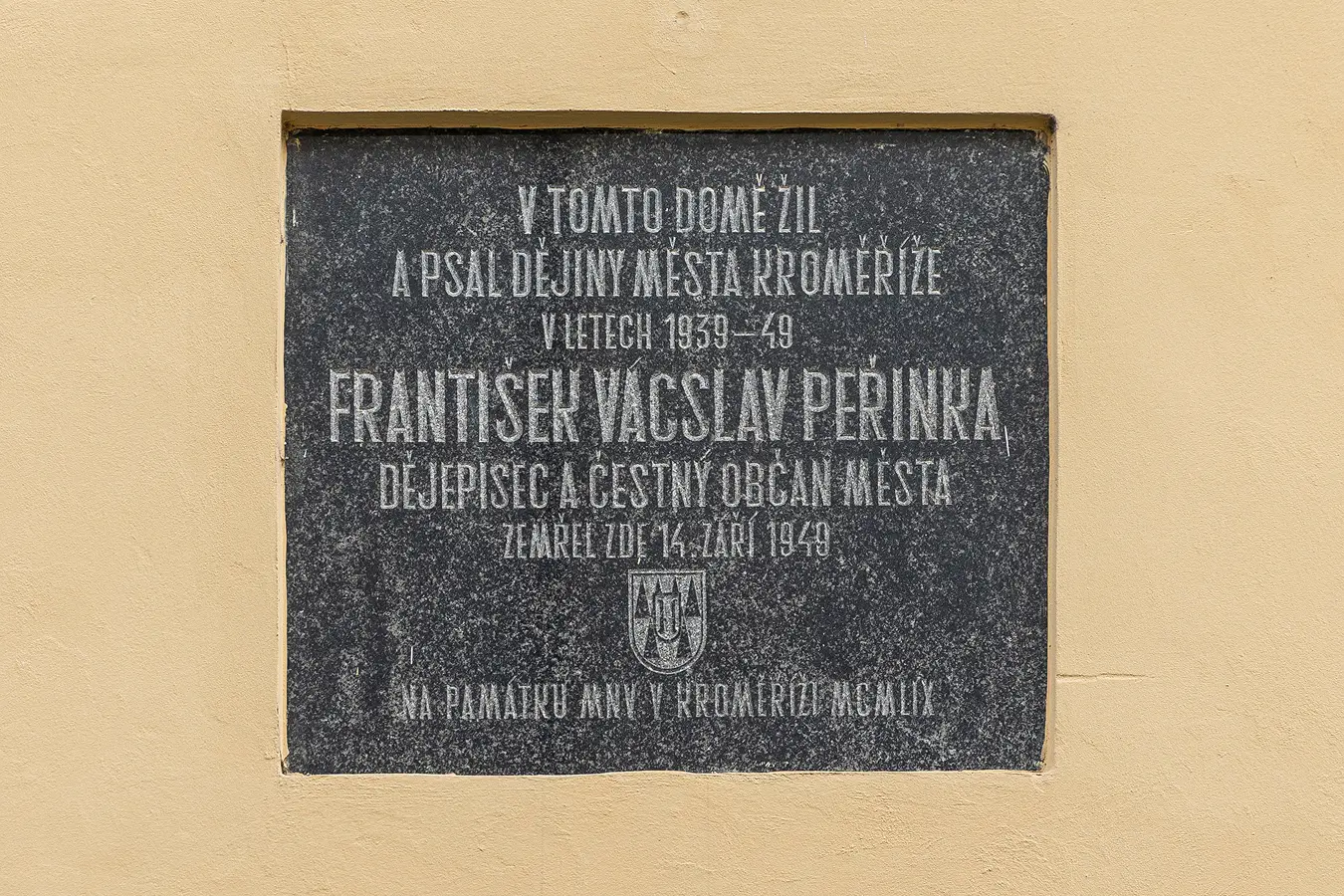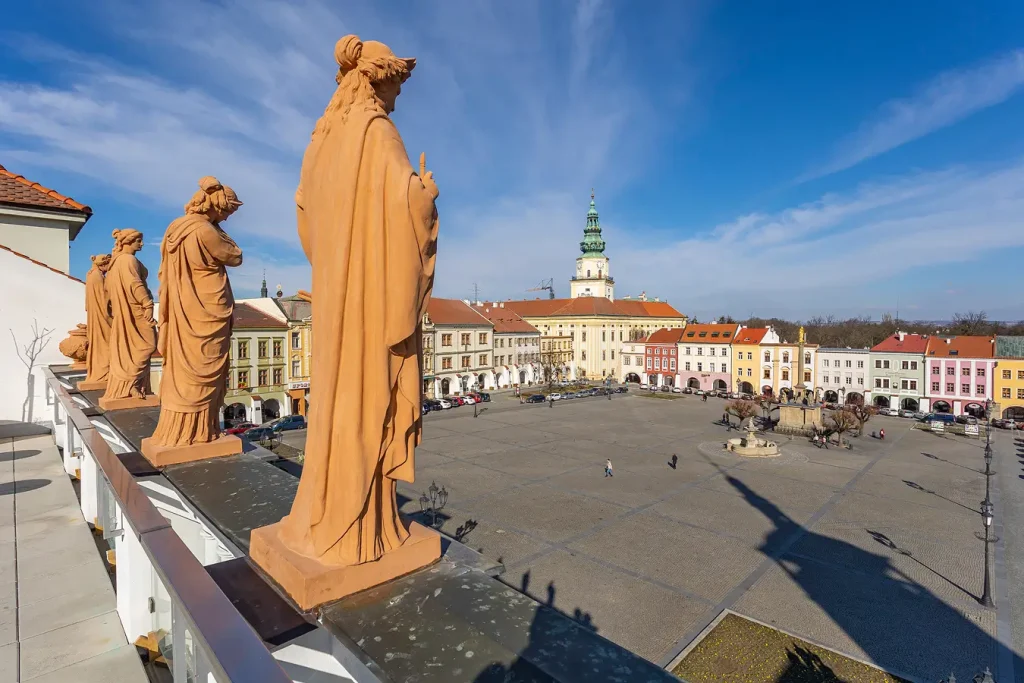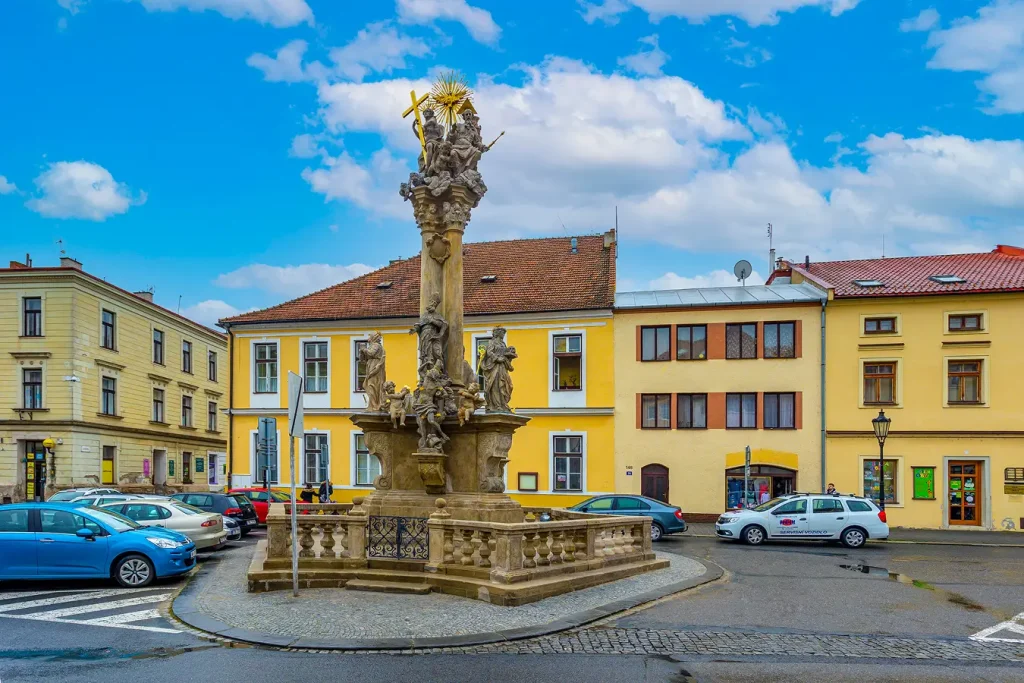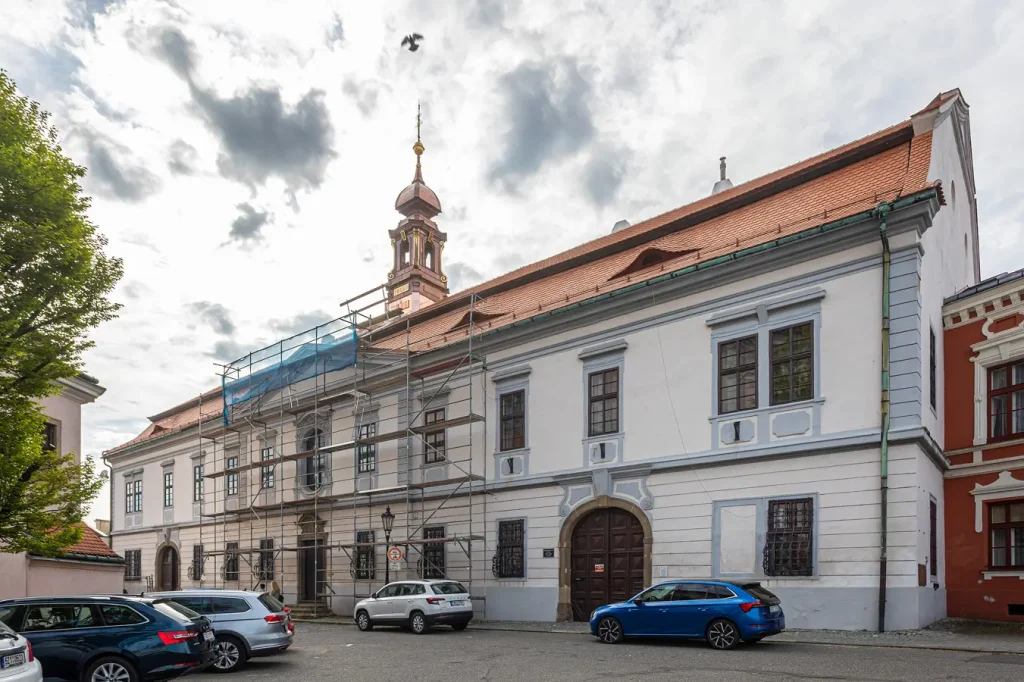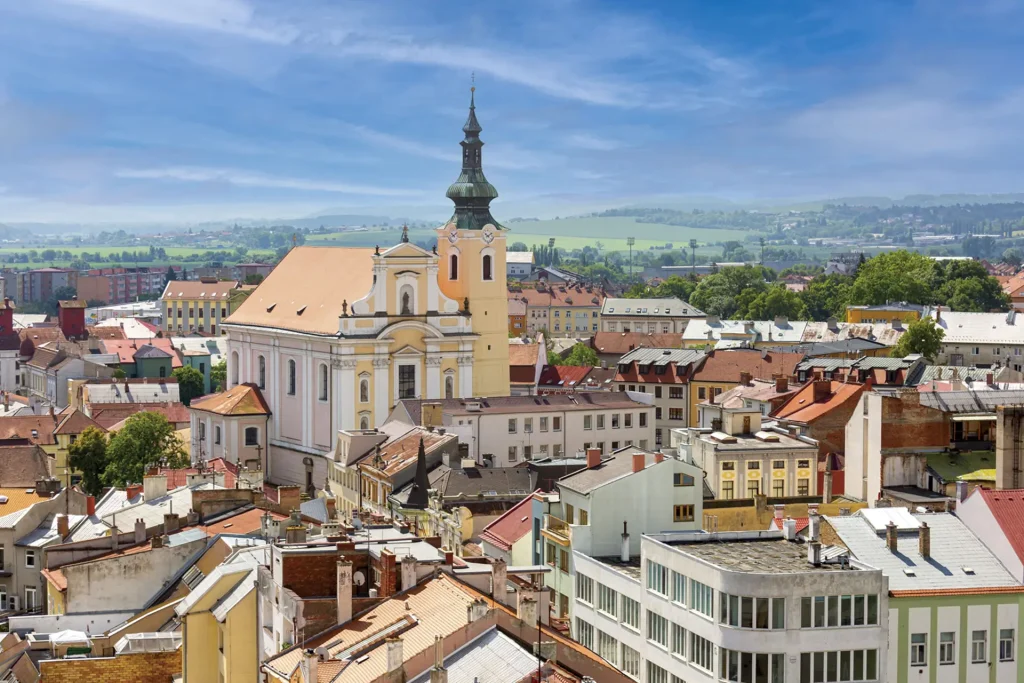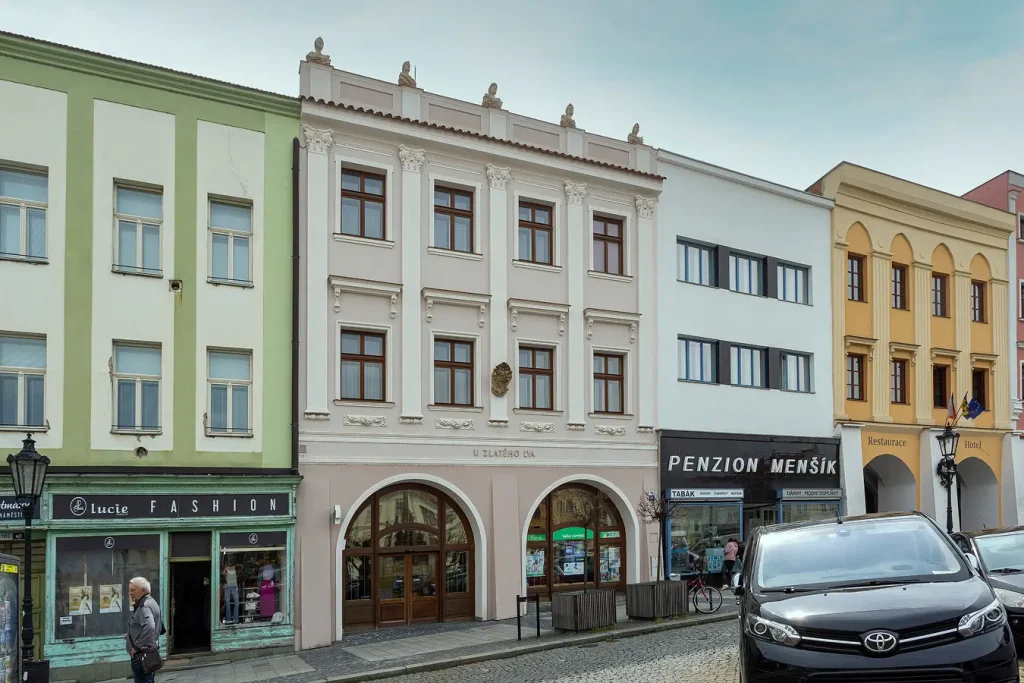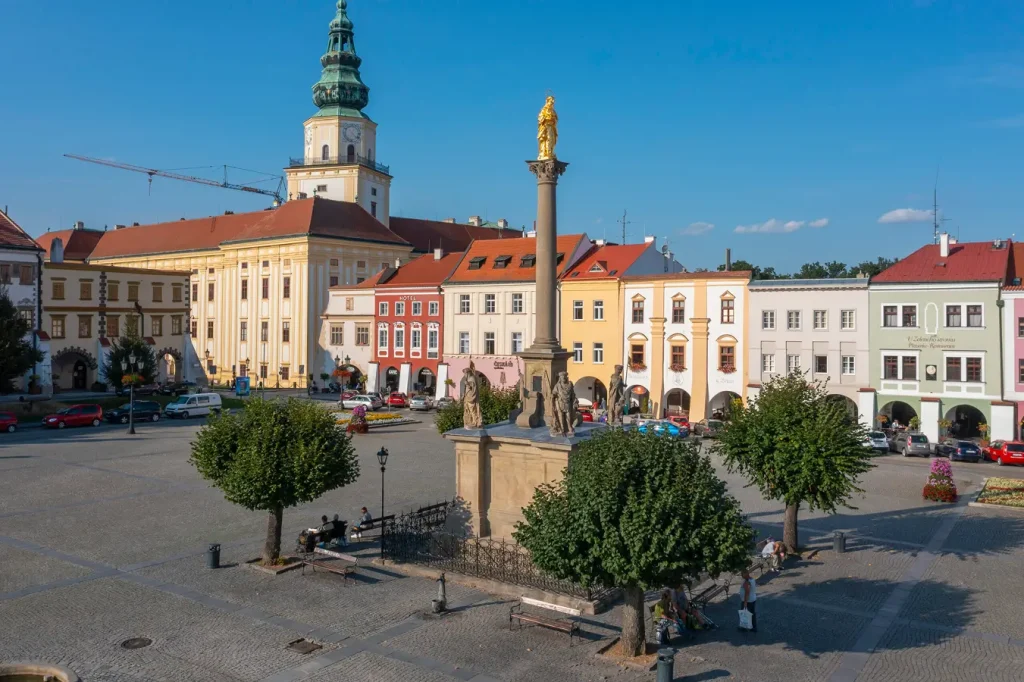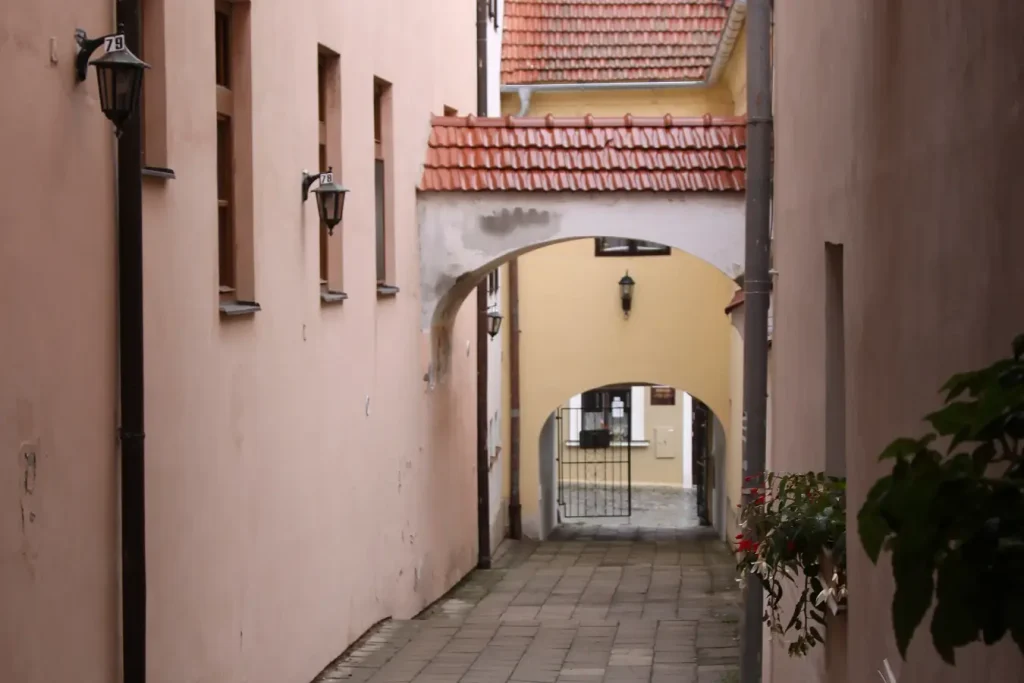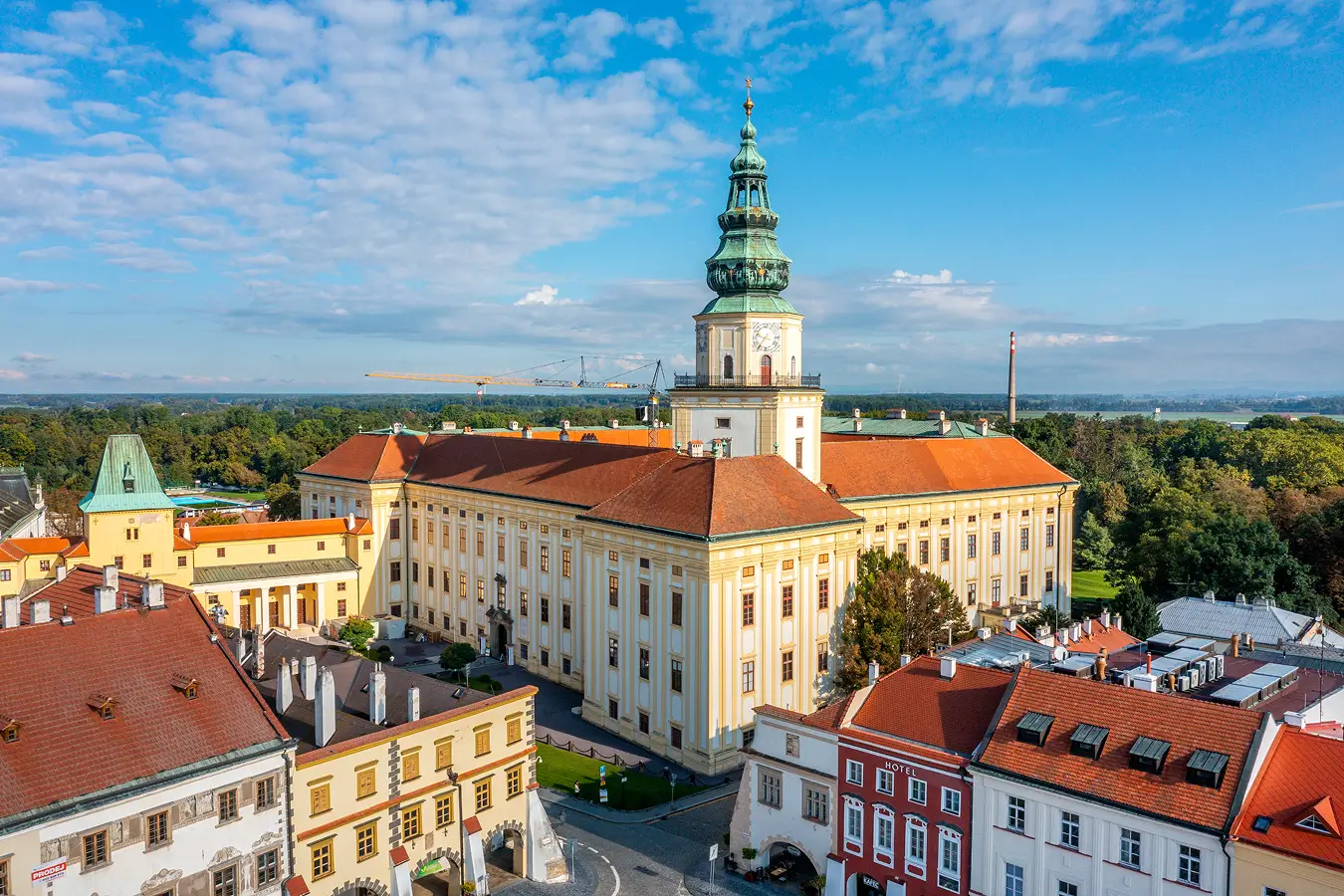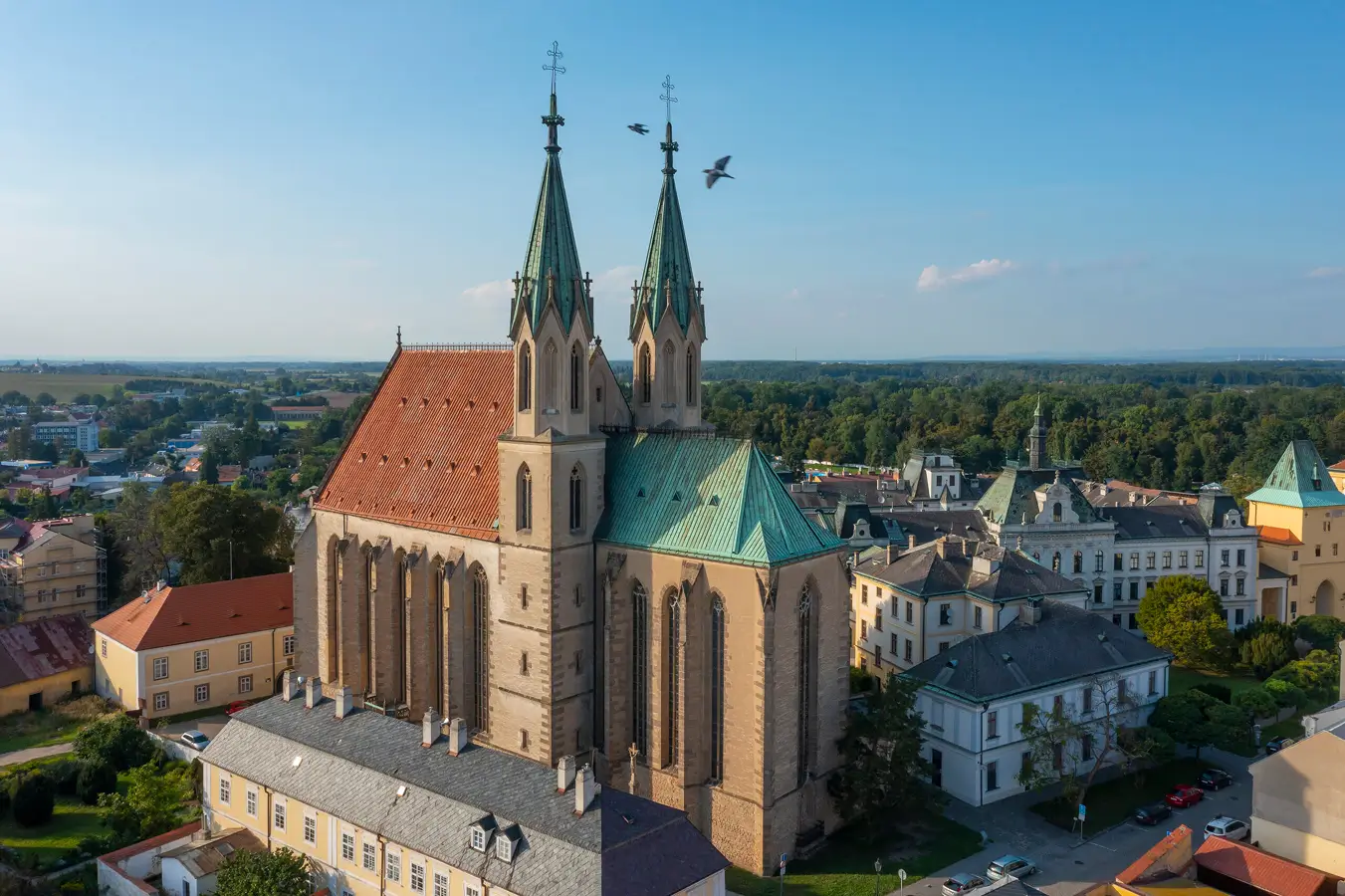Length of the route: 1,2 km
Duration: 30 min
When walking through Kroměříž (but this also applies to other towns and places), we concetrate mostly on the obvious attractions that can be noticed at first glance, the objects that are directly offered, beauties that we have directly in our view and almost always at eye level. Sometimes we may lower our eyes to the ground to see what we are stepping on and where we are stepping – whether for our own safety or out of curiosity. But we seldom raise our eyes upwards, rarely stop, tilt our heads, and gaze up. And therefore we often miss interesting things, eye-catching places, impressive and unique details and even huge installations that we take for granted, all these are waiting for us unnoticed… So now please look up with us and get acquainted with the details of some buildings, with interesting facts related to towers, columns and attics of buildings. Here are a few tips from us before you continue on your own. Don’t forget: Heads up!

